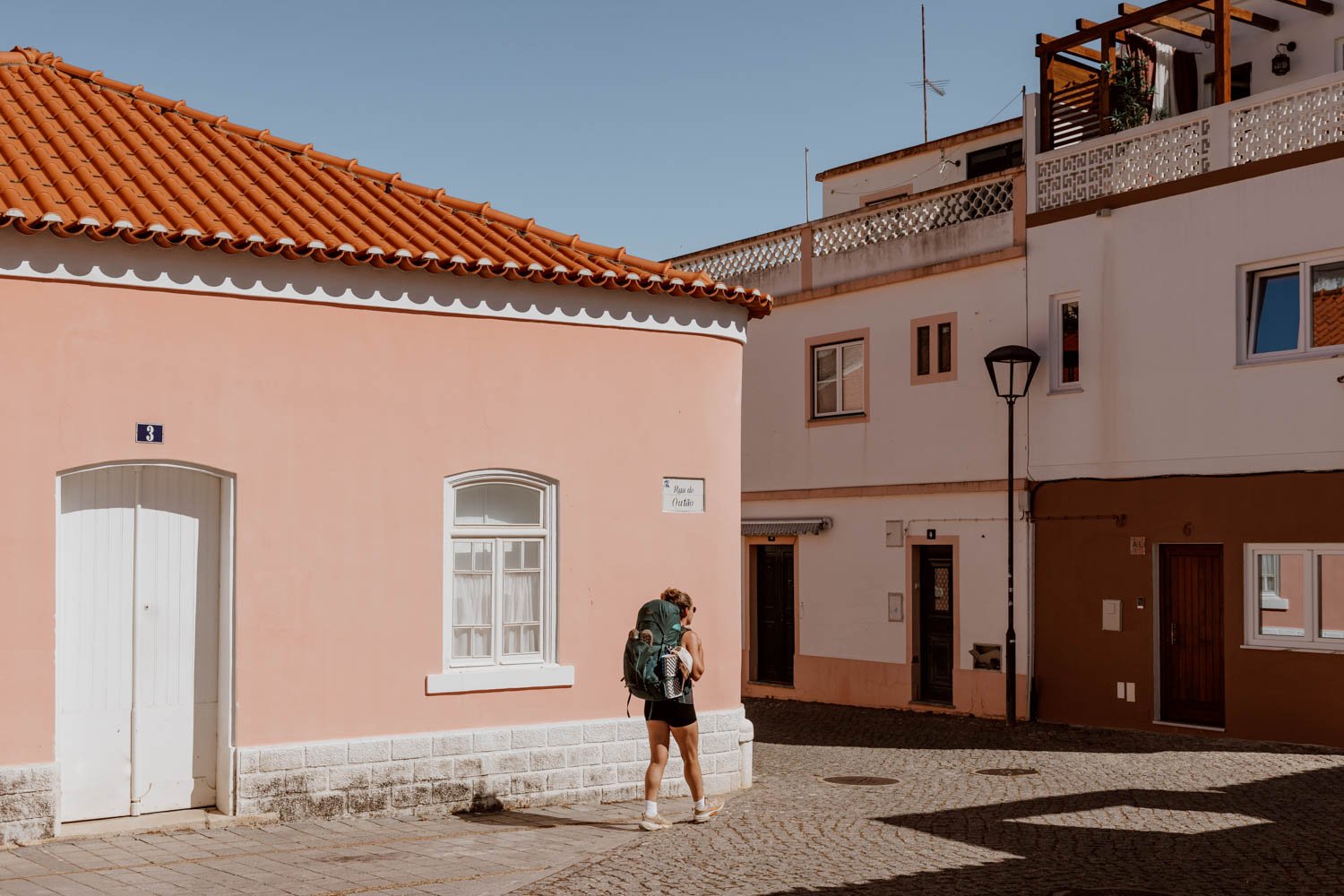Footwear & Socks
As we’ve mentioned in more detail in our main Fishermen’s Trail guide, there’s no perfect shoe for this particular long-distance trail.
This is primarily due to the soft sand and dunes that are a feature of the first three or four days, and the fact that you’ll be doing a variety of ascents / descents and quite long stints on dusty roads.
We decided to leave our trusty hiking boots at home, as big heavy boots and hiking socks in May’s warm weather and crisp spring sunshine didn’t appeal.
Instead, we hoped a combination of new TEVA hiking sandals and a pair of proper, worn-in running shoes would work well together. Theoretically, the sandals were for the sandy sections and post-hike comfort, while the trainers for days when it was more about mileage and making up time on the flat, compact trails.
Switching between the two worked really well – especially when the terrain unexpectedly shifted to sand – but there were definitely sections and days when a boot would have been better than both.
Emily’s ankle would also almost certainly have had fewer issues toward the end of the fortnight if she’d had a bit more support!
On the other hand, the hikers we saw and spoke to who only brought a pair of hiking boots or trainers were cursing the amount of sand they had to empty out of them every few kilometres on certain days, and often looked at our open-toed sandals with envy.
One group even told us they regretted not bringing their sandals instead of their boots!
So, the truth is that there will be pros and cons to any type of Fishermen’s Trail footwear. As terrain underfoot varies from dusty road, roadside, beach, dune, forest track, rocks, grass, and pavement (sometimes on a single day), hiking boots will be best in certain scenarios, hiking sandals will excel in others, and sometimes good trainers are a much more pleasant, comfortable alternative to both.
So, what type of footwear should you pack for the Fishermen’s Trail?
We discussed this at length during and after the hike, and think the secret to success is to bring two types of footwear that complement each other. That way, you’re covered for all terrains and scenarios, as well as evenings and rest days.
From our experience, the best shoes in warmer months will be a pair of lightweight, broken-in hiking boots and a reliable pair of good hiking sandals (we highly recommend our TEVA Hurricane XLT2 sandals).
Our running trainers were okay, but the lack of ankle support and…
Click Here to Read the Full Original Article at Blog…
